The Apple iPhone XR Review: A Different Display Leads To Brilliant Battery Life
by Andrei Frumusanu on February 5, 2019 9:45 AM EST- Posted in
- Mobile
- Apple
- Smartphones
- iPhone XR
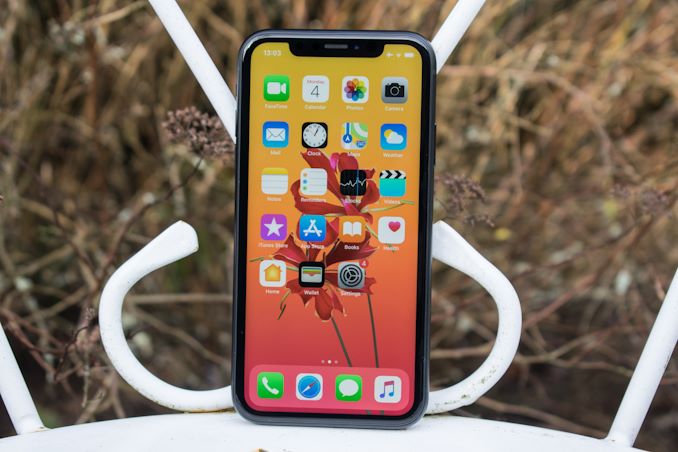
The latest generation of iPhones have been out for a couple of months now – we’ve extensively reviewed the iPhone XS and iPhone XS Max shortly after their official release. Missing in the review was the lower-tiered iPhone XR – the main reason for this being Apple deciding to release this variant a month after the original XS models had become available. Today, albeit a bit late, we finally got the chance to get our hands on a unit, and investigate some of the differentiating factors of the iPhone XR – such as the LCD screen and the phone’s overall battery life.
The iPhone XR is an interesting product for Apple: It is clear that it aims to be a lower-cost alternative to the higher-end XS flagships. Yet at the same time it’s not directly an alternative to either the XS or the XS Max, and rather represents a model that squarely fits in-between its two higher-priced siblings.
Back when I first laid my hands on the iPhone XR at Apple’s launch event, one of the things noted was that I believed the iPhone XR was going to become the most popular choice among Apple’s current smartphone generation. A couple of months later, and probably with some hindsight, it seems that Apple’s decision to not release the XR at the same time as the XS and XS Max might have actually shifted a lot of users to just jump on the higher-end models, rather than to wait.
Let’s see if the iPhone XR is still a good alternative to the new XS – and in particular let’s address the elephant in the room that is the display as well as battery life differences that are specific to the XR.
| Apple 2018 iPhone Specifications | ||||
| iPhone XR | iPhone XS | iPhone XS Max | ||
| SoC | Apple A12 Bionic 2 × Vortex @ 2.5GHz 4 × Tempest @ 1.59GHz |
|||
| GPU | 4-core "G11P" @ >~1.1GHz | |||
| DRAM | 3GB LPDDR4X | 4GB LPDDR4X | ||
| Display | 6.1-inch LCD 1792×828 DCI-P3/True Tone |
5.8-inch OLED 2436×1125 DCI-P3/True Tone 3D Touch |
6.5-inch OLED 2688×1242 DCI-P3/True Tone 3D Touch |
|
| Size | Height | 150.9 mm | 143.6 mm | 157.5 mm |
| Width | 75.7 mm | 70.9 mm | 77.4 mm | |
| Depth | 8.3 mm | 7.7 mm | 7.7 mm | |
| Weight | 194 grams | 177 grams | 208 grams | |
| Battery Capacity | 2942mAh / 11.16Wh | 2658mAh / 10.13Wh | 3174mAh / 12.08Wh | |
| Wireless Charging | Qi | |||
| Rear Cameras | 12 MP 1.4µm pixels, f/1.8, OIS Wide Color Gamut Quad LED True Tone Flash Portrait Mode, Portrait Lighting, Depth Control |
|||
| none | 12 MP f/2.4 Telephoto, OIS 2x Optical Zoom Portrait Mode, Portrait Lighting, Depth Control |
|||
| Front Camera | 7MP f/2.2 Wide Gamut, Retina Flash, Portrait Mode, Portrait Lighting, Depth Control |
|||
| Storage | 64 GB 128 GB 256 GB |
64 GB 256 GB 512 GB |
64 GB 256 GB 512 GB |
|
| I/O | Apple Lightning | |||
| Wireless (local) | 802.11ac Wi-Fi with 2x2 MIMO + Bluetooth 5.0 + NFC | |||
| Cellular | Intel XMM7560 Modem UE Category 12 LTE (600Mbps) |
Intel XMM7560 Modem UE Category 16 LTE (1Gbps) with 4x4 MIMO and LAA |
||
| Splash, Water, Dust Resistance | IP67 up to 1 meter, up to 30 minutes |
IP68 up to 2 meters, up to 30 minutes |
||
| Dual-SIM | nano-SIM + eSIM nano-SIM + nano-SIM (China model) |
|||
| Launch Price | 64 GB: $749 128 GB: $799 256 GB: $899 |
64 GB: $999 256 GB: $1149 512 GB: $1349 |
64 GB: $1099 256 GB: $1249 512 GB: $1449 |
|
Starting off with the specifications, the iPhone XR has very similar hardware to the iPhone XSes: At the heart all the models, we find Apple’s latest A12 SoC. The A12 made huge impressions by delivering some outstanding performance and power efficiency – showcasing some incredible figures that are near those posted by some of the best desktop PCs. An especially big leap in this generation was Apple’s new GPU, which combined with the new 7nm process node has made for some impressive improvements in terms of power efficiency.
In terms of differences in the internal hardware capabilities, the only high-level divergence to jump out is the fact that the iPhone XR comes with 1GB less DRAM than the 4GB XS variants. For general use-cases, I haven’t noticed a meaningful difference between the models in this regard and I don’t see it as an issue.
Other internal hardware difference that can’t be seen are on the connectivity side. The iPhone XR offers the same maximum cellular connectivity speeds as on the iPhone 8, with LTE speeds topping out at Category 12 rather than the Category 16 speeds the underlying modem is capable of. The reason for the change here is due to the lack of 4x4 MIMO on the iPhone XR – this difference can actually been seen externally, as the XR lacks the two new antenna segments that were introduced with the iPhone XSes.
From a design perspective, the iPhone XR’s back is a bit more similar to the iPhone 8 than it is the iPhone XS. The big change here from the iPhone XS models is the obvious lack of a second telephoto camera module. The main camera sensor is still the same 12MP module as found on the new XS – this means an improved and larger sensor with 1.4µm pixels, an f/1.8 aperture lens as well as OIS. Going into this review we weren't really expecting the iPhone XR's rear camera to perform any differently than the regular XS, and our camera testing has confirmed as much.
It's on the front of the phone where we find the most obvious differences relative to the XS models: The iPhone XR comes with a lower resolution LCD panel rather than the OLED displays employed by the XS. Over the last few months the LCD display on the XR has been quite a focal point of many discussions – mainly arguing about Apple’s choice of going with a quite lower pixel density than what we would have expected for a 2018 iPhone. We’ll be revisiting the display panel’s performance later in the article as we literally take a closer look at the panel as well as its calibration.
If for some users the difference between the LCD and OLED panels are hard to distinguish, another telling aspect of the iPhone XR over the XS models is its thicker bezels on all sides. When Apple launched the XR I was quite surprised at this design choice. The reasoning for it is that Apple wanted to keep a symmetric design on all sides – and with the LCD panel of the XR it seems that Apple wasn’t able to get a quite as thin a display controller lip as on the OLED panels of the iPhone X and XS. The difference is immediately visible and personally I don’t find it very endearing for the phone, as the new bezels are actually thicker than any past iPhone. The comparison to some recent Android phones is even less favourable for the XR, as some have side bezels of less than half the size, even those with LCD panels.
Another point of discussion is the size of the iPhone XR. The phone falls in the middle in terms of size, in-between the smaller XS and the bigger XS Max. Apple here had to find a balance to satisfy the majority of users while avoiding a total of four phone variants. I think the XR’s size falls in a very good middle-ground that is becoming more and more popular with handset vendors.
While the XR’s 75.7mm width is also within this “sweet-spot”, its in-hand feel does not directly match the experience that I’m accustomed to for phones of this form-factor. The reason for this is that the iPhone XR comes in at 8.3mm, around 8% thicker than the iPhone XS and XS Max. While this might not sound like much, on a subjective level I find that it make a big difference to me. And even though, for example, the XS Max is a wider phone at 77.4mm (above my preferred size), I do like it more than the XR, as I feel it to be easier to hold. It’s to be noted that Android phones similar in width to the XR are almost all more ergonomic to hold – this is due to sloped sides on the back essentially becoming a norm amongst most manufacturers.
Overall, I have mixed feelings about the design of the iPhone XR. On one hand, it’s absolutely something you can get used to, and there are users out there who subjectively prefer a symmetric bezel design over thinner side-bezels. The one thing that surprised me more than I anticipated is that I didn’t like the ergonomics of the XR as much. I feel that the phone would have at least benefitted from a lower weight – again here at 194g it’s very much on the heavier side of the scale compared to similarly-sized phones. With all of that said, the one design choice of the XR that I actually prefer is that it still has brushed aluminium sides as opposed to the polished/glossy steel on the XS models, this allows the XR to have notably better grip and is more akin to what we find in older iPhone models.


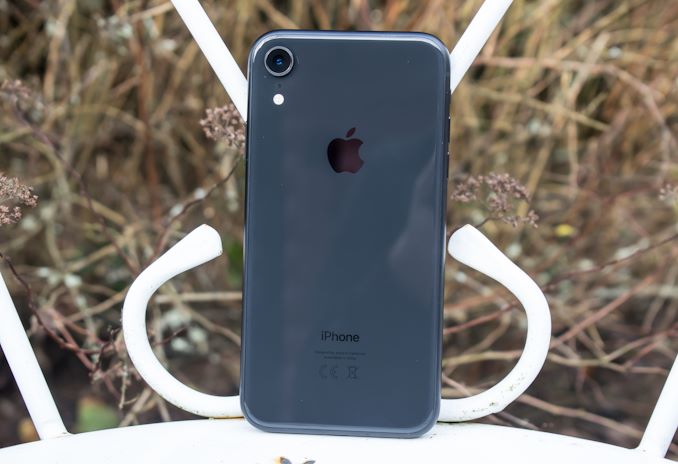
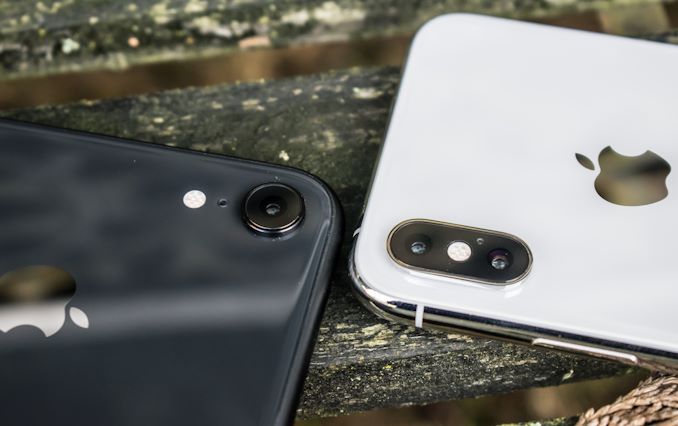
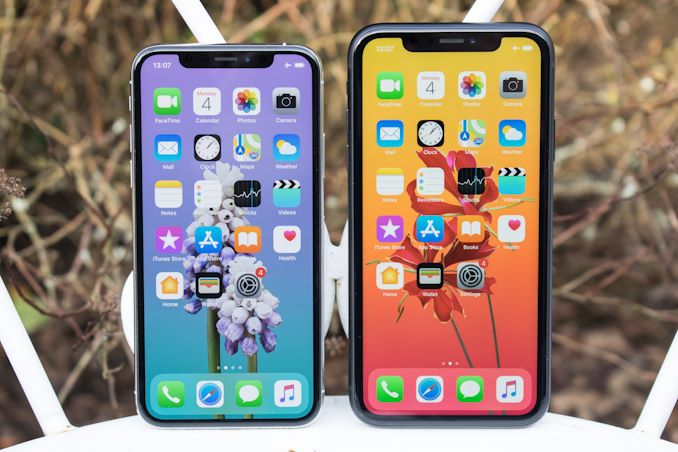
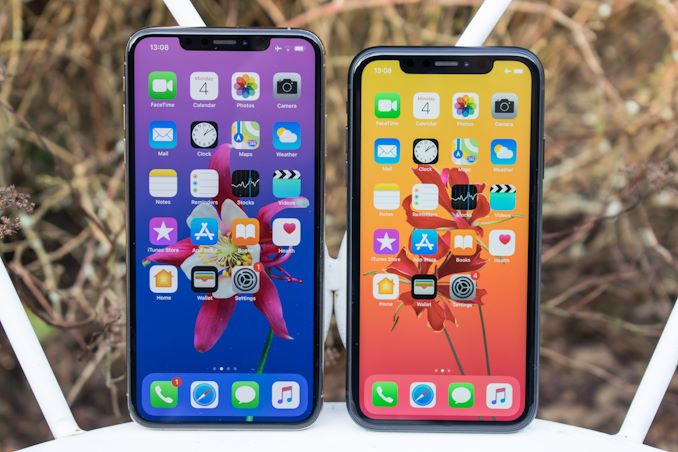
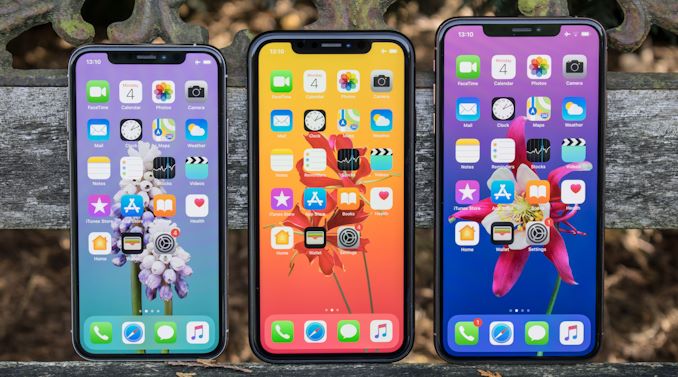









89 Comments
View All Comments
Lolimaster - Thursday, February 7, 2019 - link
The resolution is just craptastic vs a 5.8" S9 where you can have TRUE 1080p RGB AMOLED when going 1080p in the options down from 1440 pentile mode.darkich - Thursday, February 7, 2019 - link
Wow, just wow.I find this comment to ironic because the only gripe I have with the XR is not the display not how ridiculously big bezels it has..as if it has a bumper case.
That some people can't see this is beyond me..
ss96 - Tuesday, February 5, 2019 - link
Hi Ian, do you have a number for the display's contrast ratio? Interested to know how it compares to previous iPhone LCDs.Also, what happened to the charts comparing contrast, color accuracy to the competing smartphones? Really miss those.
Andrei Frumusanu - Tuesday, February 5, 2019 - link
https://images.anandtech.com/doci/13912/XR-greysca...1450 to 1550:1 to depending on brightness.
As for the the accuracy charts, I think it lead to a lot of readers to too quickly jump to conclusions and misunderstand what the figures actually meant, and for example in the past we had some cases of phone A having a dE of say 2 vs a dE of 1 - in both cases the actual differences in this case are extremely small and in isolated conditions probably imperceptible. However because they had just looked up the chart they determined that phone B was that much better because the bar graphs were that much shorter. I think this was quite counter-productive to the analysis of some devices and something I wasn't that big of a fan of.
ss96 - Tuesday, February 5, 2019 - link
Hi Andrei, thanks for your answer. I liked those because it was easy to know what other devices scored without having to go to their respective review, but I understand that it may be misleading.MarcusMo - Wednesday, February 6, 2019 - link
I get what you mean regarding the dE comparison charts, however removing them all together seems like the nuclear option.Having review sites such as anandtech calling out poor accuracy again and again is part of the reason we’re seeing manufacturers finally care about this metric. Shaming them on a public comparison chart is a much more effective means towards that end then burying the numbers in each individual review.
A suggestion would be to include a cutoff line in the chart, declaring anything below this to be imperceptible to the human eye. That, and the Anandtech readerships ability to parse objective data (why we visit this site), should be enough to assuage any fears of misinterpretation.
mkozakewich - Wednesday, February 6, 2019 - link
You should turn those charts into some kind of logarithmic efficiency thing, where a dE of <=1 is 100% and a dE of 3 is 90%, or something like that.eastcoast_pete - Tuesday, February 5, 2019 - link
@Andrei: Thanks for this review. I largely agree with your analysis, but have an addition to your interpretation of Apple going below Full HD for the XR's display. Yes, build costs may well have been a little bit lower, but my suspicion is that, had the XR had even just an FHD display (otherwise identical in specs to the current one), the value proposition for the XS and XS Max would have been even more doubtful than it already is. Not that the XR is, by any means, a cheap phone - $ 749 for the 64GB entry-level model is a lot of money. But, I believe that Apple's decision to go with a below-FHD display for the XR was mainly to make it just that little less attractive so enough people still go for the premium models.fasterquieter - Tuesday, February 5, 2019 - link
I think the answer is much simpler. They determined years ago that 326ppi is sufficient as far as clarity goes. They have approaching a decade of software optimized for this 2X pixel count. Going slightly denser would have resulted in negligible image quality improvements and the need to downscale the image, like the Plus phones. That came with its own disadvantages. I think they made the right call.Zeross - Tuesday, February 5, 2019 - link
I think that you're perfectly right and In my opinion, something often overlooked is that the X and XS OLED displays are higher resolution mostly to compensate for the PenTile subpixels arrangement : the 458ppi figure is only true for green subpixels. Red and blue subpixels have a 324 sppi definition. So basically Apple have determined years ago that ~320ppi is good enough and the X (XS) screen resolution was chosen to ensure that all subpixels achieve this number. Of course I have no insight knowledge and I may be completely wrong but it would be a weird coincidence if by pure luck, the red and blue sppi of its latest phones is almost exactly the same that the one chosen in 2010 for the first retina iPhone.